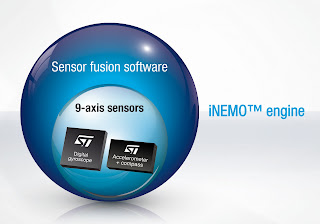Automated Schematic Porting Tool Cuts Effort by 10-100X Compared to Manual Porting
MunEDA in Munich has launched the first commercially-available electronic design automation (EDA) software tool to automate the time-consuming task of porting circuit schematics and intellectual property (IP) between different process technologies and process design kits (PDKs).
As the newest member of MunEDA’s tool suite, the WiCkeDTM SPT Schematic Porting Tool executes 10-100X faster than manual schematic porting, significantly reducing design time and effort. The tool supports migration paths in major TSMC process technologies such as from tsmcN65 (65nm) to tsmcN40 (40nm), but can be configured also for different process migration paths.
“IP and schematic porting is one of the key topics of the industry,” said Andreas Ripp, MunEDA vice president Sales & Marketing. “Migrating circuit schematics between different process technologies and PDKs can be a very time-consuming task for circuit designers, and we see a clear customer need for an automated solution. MunEDA invested in the development of this advanced technology and methodology, which significantly increases designer productivity and is much simpler than manual schematic porting.”
MunEDA WiCkeD SPT supports designers with an efficient design migration path, automatically replacing cells in the source PDK with corresponding cells for the target PDK. It provides flexible property mapping and automated shrinking, and handles all kinds of devices such as MOS transistors, resistors, capacitors and others. It is configurable for many source and target process technologies, and is initially available in TSMC processes. MunEDA can set up further process technologies on request. MunEDA WiCkeD SPT is fully integrated into the Cadence Virtuoso-based unified custom/analog flow.
“SPT addresses the ever-growing challenge of migrating many design blocks – and even entire SoCs – from one process to another in a short time, often with limited engineering capacity," said Michael Pronath, MunEDA vice president of Products & Solutions. "Migrating analogue/mixed-signal (AMS) designs, RF designs, IP libraries and high-speed interfaces is particularly challenging, because there is no simple rule for shrinking them. Most blocks need individual adjustment of topology, geometries, biasing, etc., even if the specifications don’t change. It is therefore necessary to migrate and port the schematics individually to conform to the technology constraints and to meet performance specifications. Manual migration is effort-intensive, and threatens to be a bottleneck. SPT solves these problems.”
MunEDA WiCkeD SPT supports designers with an efficient design migration path, automatically replacing cells in the source PDK with corresponding cells for the target PDK. It provides flexible property mapping and automated shrinking, and handles all kinds of devices such as MOS transistors, resistors, capacitors and others. It is configurable for many source and target process technologies, and is initially available in TSMC processes. MunEDA can set up further process technologies on request. MunEDA WiCkeD SPT is fully integrated into the Cadence Virtuoso-based unified custom/analog flow.
“SPT addresses the ever-growing challenge of migrating many design blocks – and even entire SoCs – from one process to another in a short time, often with limited engineering capacity," said Michael Pronath, MunEDA vice president of Products & Solutions. "Migrating analogue/mixed-signal (AMS) designs, RF designs, IP libraries and high-speed interfaces is particularly challenging, because there is no simple rule for shrinking them. Most blocks need individual adjustment of topology, geometries, biasing, etc., even if the specifications don’t change. It is therefore necessary to migrate and port the schematics individually to conform to the technology constraints and to meet performance specifications. Manual migration is effort-intensive, and threatens to be a bottleneck. SPT solves these problems.”
MunEDA WiCkeD SPT will begin shipping in April. Pricing for a single license starts at $25,000 USD for a one-year time-based license.




















